Ice storms can be damaging to house and home, but beautiful, too. What havoc happened at Haphazard Homestead? Come into my post and see!
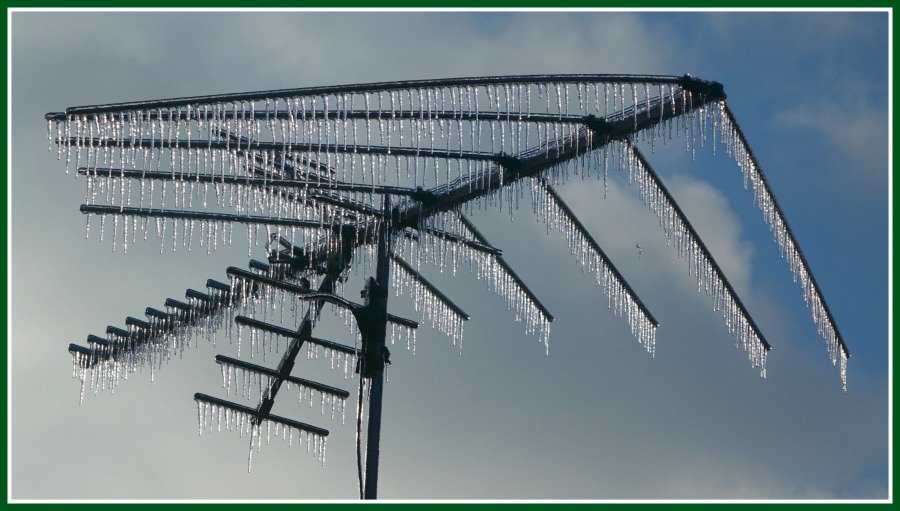
Here's the first post on the Great Willamette Valley Ice Storm of 2016. I've already shown the effect of the ice on my Sequoia and Larch Trees; Blue Spruce and Western Redcedar Trees; Noble Fir, Grand Fir, and Eastern White Pine Trees; two sets of Douglas-Firs, Ponderosa Pines, Hazel, Walnut, Birch, Holly, and Elm Trees, Garden Plants, and Fruit Trees.
To thank everyone who has been active on my Ice Storm photo series, I'll be having an Ice Storm Party on Saturday! There will be prizes and contests that will last all weekend. You are all invited!
Ice on the Wires
In an ice storm, what's the most worrisome risk? Broken electrical wires! On the ground, they are dangerous. And ice on wires and electrical equipment can cut power to individual houses or entire neighborhoods. During the ice storm, I could hear electrical transformers popping and exploding all across the neighborhood, as electrical loads routed around down wires then overwhelmed other transformers. Each damaged transformer put even more load on the remaining transformers, eventually blowing them, too.
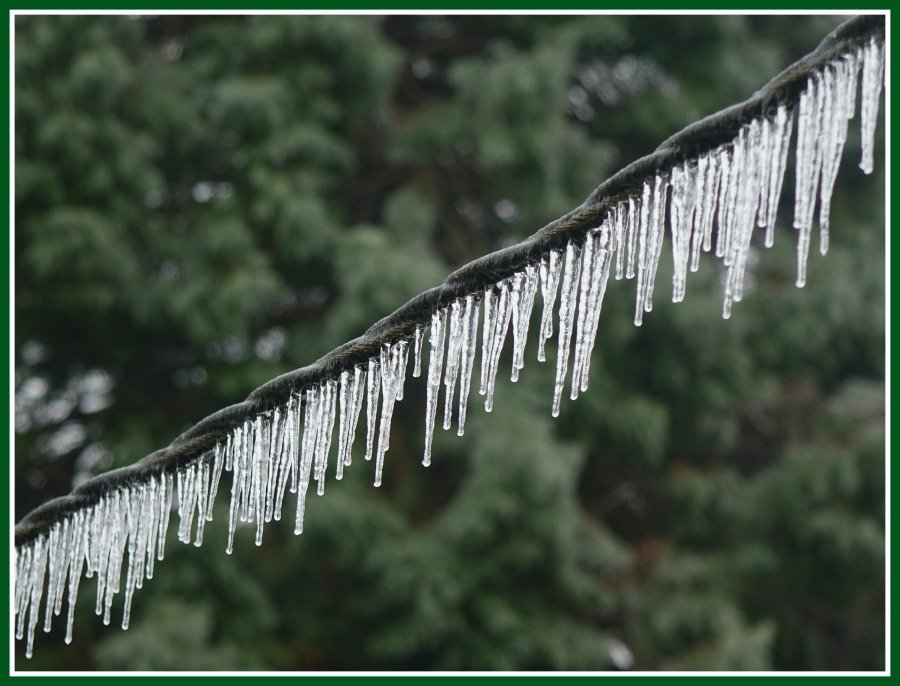
With the first "POP!", I unplugged all my electronic equipment, refrigerator, and deep freezers, even though I still had power. Why? Because shifting loads on a local electrical grid can damage circuits, power supplies, and motors. The power company quickly reduced the voltage across my whole neighborhood, to protect the remaining transformers. I could see the reduced voltage, because my incandescent lightbulbs all became very dim. Low voltage lets people still use electric heaters, although the heaters will put out only a fraction of their usual heat. At least it's enough to keep pipes and people from freezing.
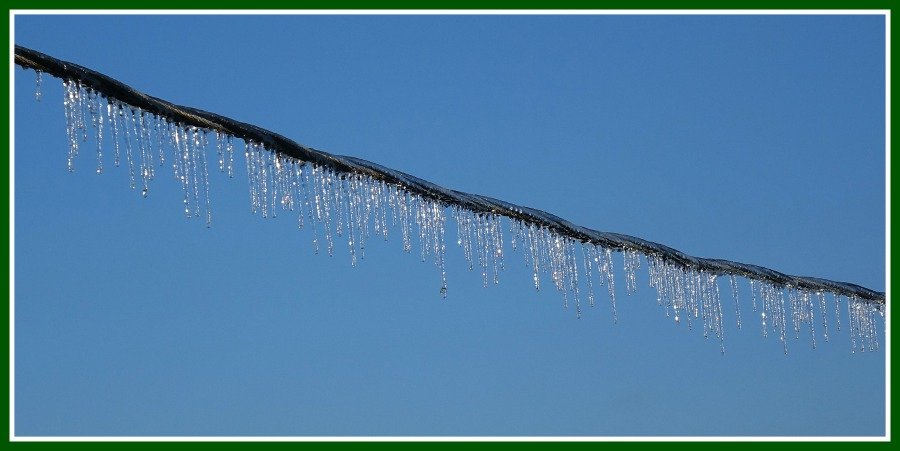
High voltage spikes can certainly damage electronic equipment, like computers and TVs. But low voltage poses real risks, too. The exact impact depends on the quality and design of the electronic components and motors. Some motors will even run backwards under low voltage! Because refrigerator and freezer motors can kick on anytime, I needed to unplug them, too, not just my computers. Then I went to my neighbor's house, because I knew they would physically have trouble doing all that themselves.
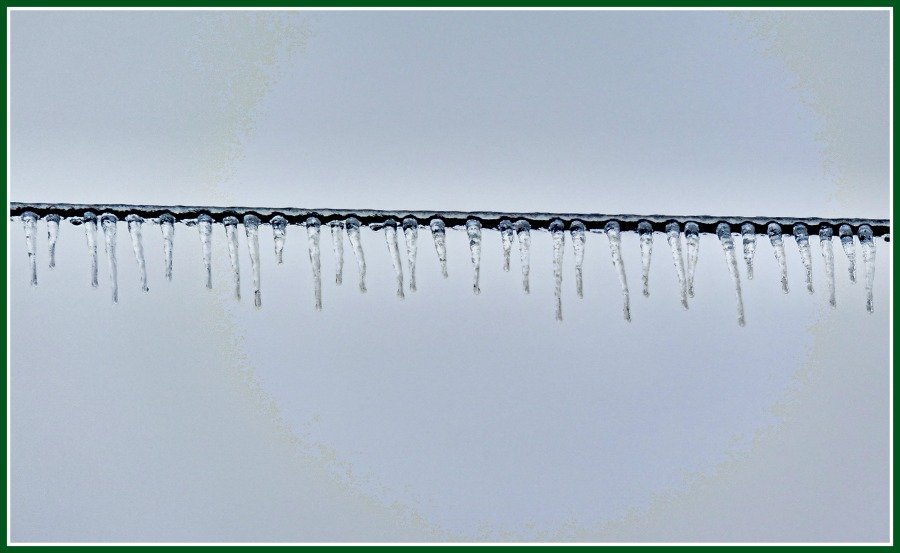
We were under low voltage for nearly 24 hours. Then the power went out completely for nearly another 24 hours, as crews replaced transformers and wires across the neighborhood. Ironically, the fanciest neighborhood in town took the longest time to get power restored - almost 2 weeks! Their area had so many big trees damaged, each house had damage on their own individual service wires, and their low-density development meant relatively few customers were affected. For once, the "little people" got treated better! Our public power company has a transparent hierarchy process already laid out for prioritizing service repairs, so it's clear there's no favoritism for some neighborhoods.
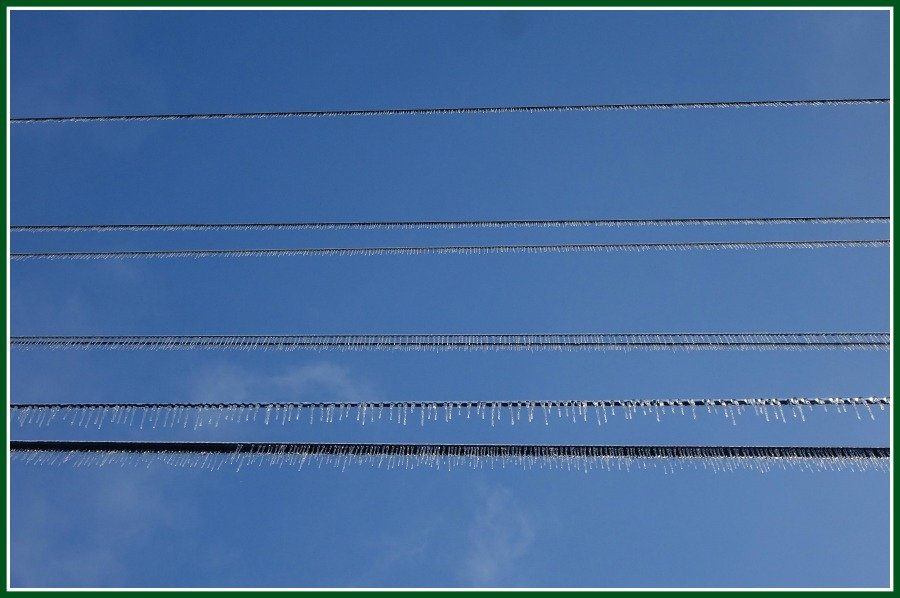
Our neighborhoods are all so dependent on the electrical grid working all the time. This event was a reminder that being prepared for disruptions is a good idea. I can get by here at Haphazard Homestead for quite awhile, and pretty easily, too. How about you?
Ice on Stuff
There was plenty ice on all sorts of things in my yard and garden, too. At least no birds were trying to use the birdhouse. I didn't need to hang my laundry on the sagging laundry line. The berry vines were off the wires. And I didn't need to use any of the garden plant cages for tomatoes, peppers, and other summer crops. They all had their own charm, covered with ice. Take a look!
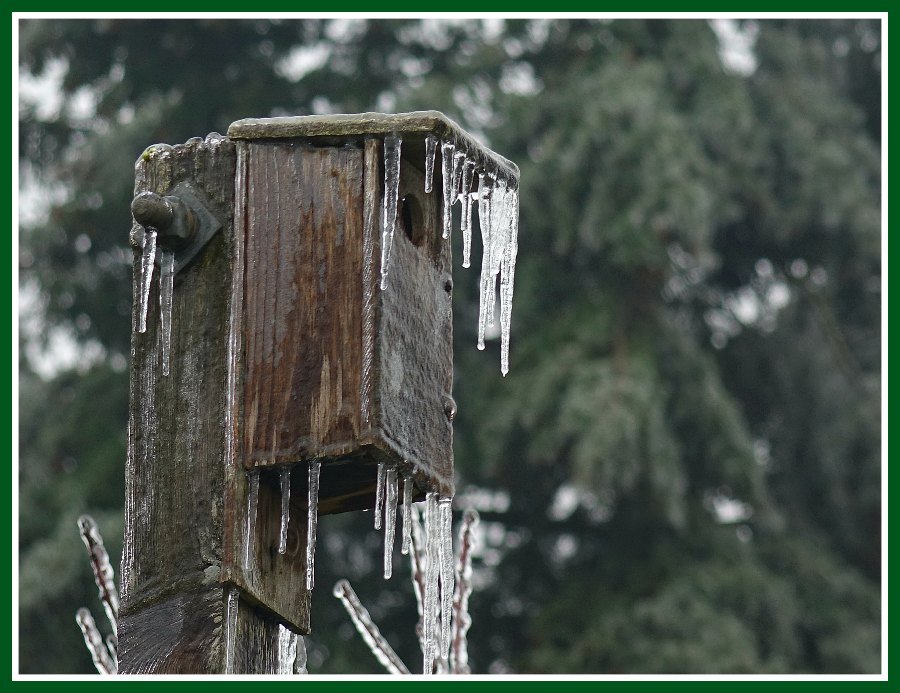
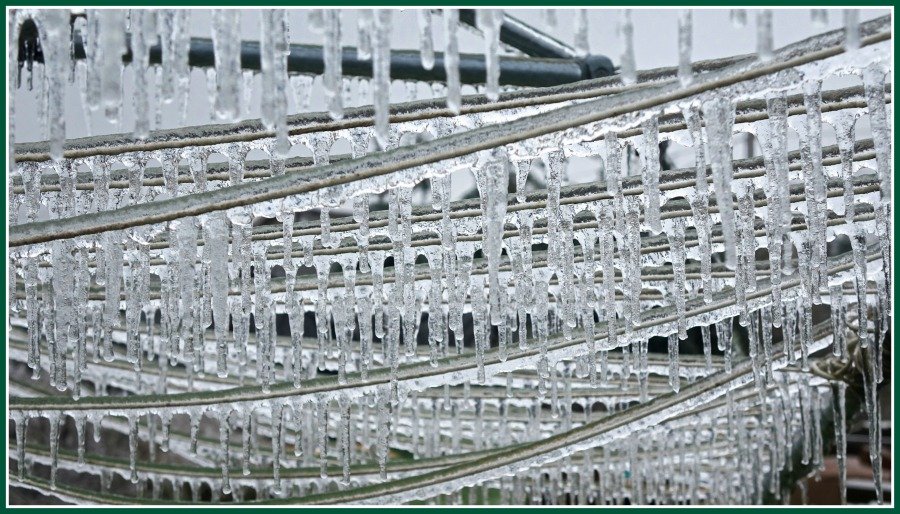
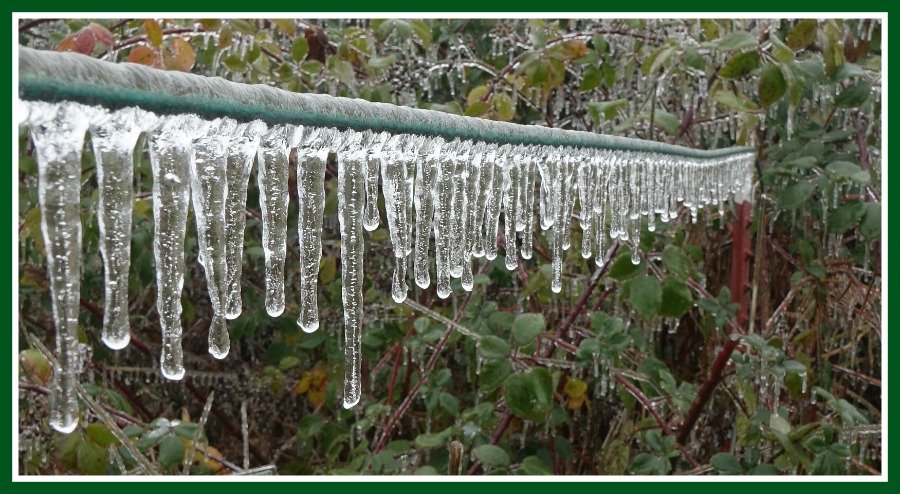
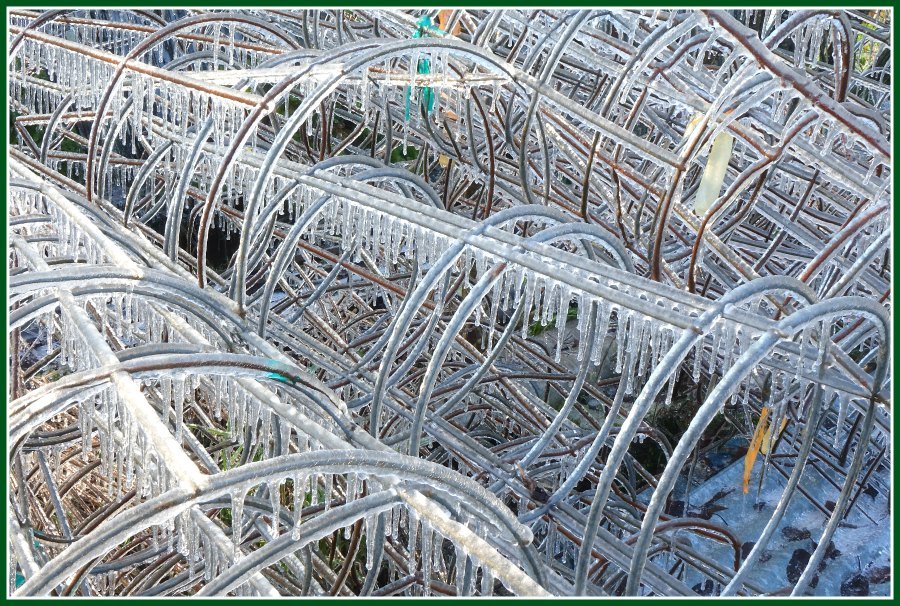
I know that some folks suffered a lot of damage from this unusually severe and long-lasting ice storm. But I was lucky. I'm prepared to be without services for quite awhile. And I know what to do when there are problems on the electrical grid.
What About You?
Have you been in an ice storm? How long of a power outage have you been through? Do you still have a chance of an ice storm where you live? I would like to know!
Other posts in this Ice Storm Series:
- The Great Willamette Valley Ice Storm of 2016
- Sequoia and Larch Trees
- Blue Spruce and Western Redcedar Trees
- Noble Fir, Grand Fir, and Eastern White Pine Trees
- Douglas-Firs 1
- Douglas Firs 2
- Ponderosa Pines
- Hazel, Walnut, Birch, Holly, and Elm Trees
- Garden Plants
- Fruit Trees
I hope you have been enjoying these ice storm photo essays. Ice storms are uncommon weather events and so transient. With a storm this big, I wanted to document and celebrate it.
To thank everyone who has been active on my Ice Storm photo series, I'll be having an Ice Storm Party on Saturday! There will be prizes and contests that will last all weekend. You are all invited!
Haphazard Homestead
foraging, gardening, nature, simple living close to the land

